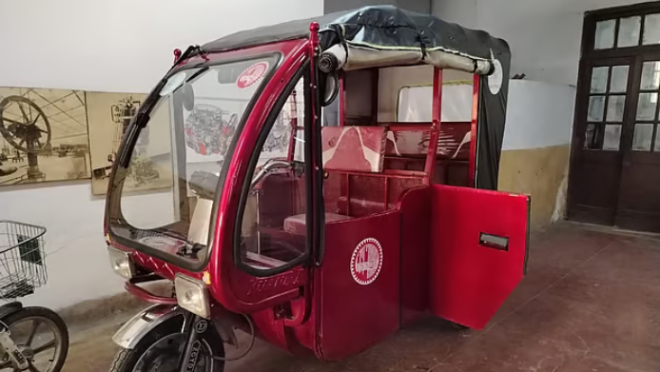BUET designs new rickshaw model, set to hit Dhaka streets
BUET designs new rickshaw model, set to hit Dhaka streets

A team from the Bangladesh University of Engineering and Technology (BUET) has developed a new rickshaw design, which, they claim, offers significantly enhanced safety compared to conventional models — while maintaining a similar production cost to that of current battery-powered rickshaws.
The Dhaka North City Corporation (DNCC) has announced plans to introduce the newly designed rickshaws on the city’s roads, gradually phasing out the old models.
The new rickshaw model was developed by a six-member research team led by Professor Md Ehsan of BUET’s Department of Mechanical Engineering. Speaking to Prothom Alo, Professor Ehsan said that he has been working on designing a safer rickshaw since 2022. Although previous attempts to engage with the government on the project did not progress, the initiative has now gained momentum.
Currently, two types of rickshaws dominate Dhaka’s streets: manually operated (pedal-powered) and battery-operated. The number of battery-powered rickshaws, which are largely unregistered and operated by untrained drivers, has surged in recent years. Despite their higher speed, these rickshaws present major safety challenges and have become a significant traffic management issue.
Key features of BUET’s redesigned rickshaw
According to the BUET team, the newly designed rickshaw is structurally similar to existing easy bikes (three-wheeled electric vehicles). The team identified safety flaws in 12 prevalent battery-operated rickshaw models across the country and incorporated 16 improvements in their design.
Besides Professor Ehsan, the team includes Professor A Salam Akand and Md Aman Uddin of BUET’s Mechanical Engineering Department, Professor Md Ziaur Rahman Khan of the Department of Electrical and Electronic Engineering, and research engineers Md Asaduzzaman and Abdul Aziz Bhuiyan.
The redesigned rickshaw will be 3.2 metres long, 1.5 metres wide, and 2.1 metres high — roughly the size of current rickshaws. It can carry between 325 to 425 kilograms, ensuring ease of operation even with two passengers onboard.
The braking system has been significantly upgraded, featuring hydraulic disc brakes on all three wheels and an additional parking brake for enhanced control.
Unlike conventional rickshaws, which lack rearview mirrors and indicators — often leading to accidents — the new model will be equipped with both features. It will also include a canopy and a glass windshield to protect drivers and passengers from rain, along with a headlight system featuring high beam, low beam, and daytime running lamps (DRL) for improved visibility and safety.
Cost of production
BUET’s team has consulted with several private sector firms to estimate the commercial production cost, which is expected to be around Tk1.5 lakh.
Saidur Rahman, Managing Director of Bivatec — one of the companies BUET approached — told Prothom Alo that approximately Tk50,000 to Tk60,000 would be needed for the battery alone, with the rest covering the rickshaw’s structure. He added that a single battery charge would allow the rickshaw to travel up to 120 kilometres, with batteries requiring replacement every 18 months. Old batteries can be recycled, reducing environmental impact.
Speed and safety
Experts note that while pedal-powered rickshaws typically travel at 10–12 km/h, installing a motor often pushes the speed up to 30 km/h, which is highly unsafe given their original structural limitations.
Professor Ehsan explained that traditional rickshaws are not designed for such speeds, and their braking systems can only safely handle speeds up to 10 km/h. In contrast, the redesigned rickshaw is structurally reinforced to safely operate at speeds up to 30 km/h, thanks to the hydraulic braking system.
When will they hit the streets?
Dhaka North City Corporation Administrator Mohammad Ejaz confirmed to Prothom Alo that the process of introducing the new rickshaws has already begun.
“There will be licensing and registration systems for rickshaw drivers. We will also arrange training programmes soon. Drivers who complete training can apply for number plates,” he said.
According to Ejaz, the government will also designate specific areas where these rickshaws will be permitted to operate, meaning they will not have unrestricted access to the entire city. Fares will also be regulated by the government.
As for existing battery-operated rickshaws, Ejaz added, “We will gradually remove them through a slow and phased process.”


